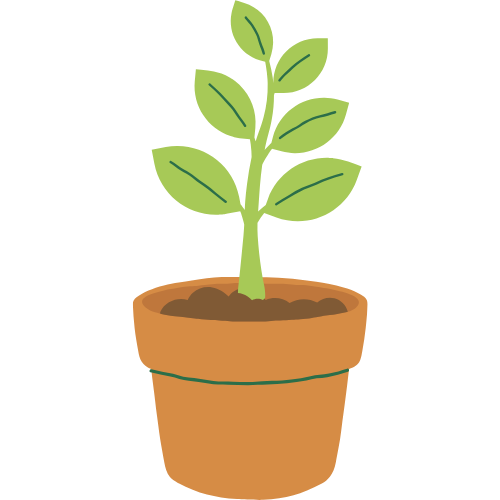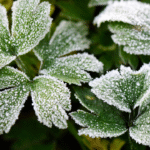Container gardening is a great technique which allows growing edible plants in containers not matter how little room you have, how small your balcony is or simply when you want to maintain your garden neat and tidy. It also provides you with better control on the conditions of the soil and easier relocation of plants to sunnier areas or shelter against cold.
The following are 10 of the best edible outdoor plants which are container successes:
1. Tomatoes
Why they make such good containers: A large number of smaller, so-called dwarf or determinate (not vining) varieties are excellent in pots. Very little space is required to be able to enjoy homegrown tomatoes. Container capacity: Requires a minimum of 5-gallons (19-liter) container capacity, the larger the better. Seek those labeled as “patio,” or “bush,” or even as “dwarf.” Tips: Better have a sturdy stake or small cage to hold it until the fruit is forming. Plants should receive full sun (6-8 hours).
2. Peppers (Bell Peppers, Chili Peppers)
The advantages of using them in containers: Peppers are a miniature plant and thrive in the warmth, so they are suited to patios. Container size: Two or 3-5 gallons (11-19 liters) per plant. Clues: They need full sun and their soil needs to drain well. Give a little bit of assistance to a higher yield.
3. Other Leafy Greens (Spinach, Arugula, kale) and Lettuce
Why they make good containers: They grow very fast so are good candidates as a cut-and-come-again plant: you can take a snippet of leaves off and they will grow back. They are also shade tolerant. Size of containers: Wide and shallow containers are best. Wide bowls or even window boxes will serve. Suggestions: Keep soil moist, most of the time. In hot climates, a little shade in the afternoon will help to prevent bolting (going to seed).
4. Herbs (Basil, Mint, Rosemary, Thyme, Oregano, Chives)
Why they are great container plants: The majority of herbs are compact in nature and prefer being kept in pots. When you grow them close to your kitchen then they become so convenient to cook. Mint is the best plant in a container where it cannot spread around in your garden. Container: 1-2 gallons (3.8-7.5 liters) of containers per plant, or larger when putting herbs together in containers. Tips: The majority of herbs prefer drainage and full sun. The chives and mint will accept a bit of shade. Bushes also grow more bushy when harvested regularly.
5. Strawberries
Why they are good in containers: Strawberries need to be planted well below the surface and are ideal plants to use in hanging baskets, strawberry pots or even on a tiered planter. This too prevents the fruit coming into contact with the ground spreading rot causing problems with pests. Ample container size: Particular strawberry pots, hanging baskets, or container minimum should be 8 inch (20 cm) in diameter. Pointers: To harvest continuously, plant “everbearing” or “day-neutral” varieties. Requires full sun.
6. Bushes Beans (Green Beans)
Why they are so good in containers: Unlike pole beans which require tall structures to support the plants, the bush varieties are small plants, which are self-supportive, therefore, make the perfect potted plants. Pot size: A minimum of 5 gallons (19 liters) when it comes to a handful of plants. Hints: Full sun. Crop frequently so as to promote further yield.
7. Radishes
Why they make such good container plants: Donkeys are so fast growing and so little space is needed to grow them that they make a very satisfactory plant to the impatient gardener. Container size: Wide and shallow containers (at least 6 inches / 15 cm deep) are best. Hints: Best aimed at moist soil at all times. Pick small to benefit by their negative characteristics.
8. Carrots
Why they make excellent container crops: Despite the root crop reputation, such carrots are a shallow rooter made to grow in shallow soil or containers, i.e., the short and stout varieties (those include the ‘Danvers Half Long’ and the ‘Paris Market”). Container: Of at least 8-12 inches (20-30cm) deep, of most varieties. Do not use tapered pots. Tips: Plant in loose and well-draining potting mix. Sow the plants properly in direct and thin young plants to grow good roots. Requires full sun.
9. Bush Varieties Cucumbers
What makes them good in containers: These varieties have been selected to be more of a bush or patio type cucumber with a shorter less vining growth habit. The size of the pot: Pot size must be as least as 5-10 gallons (19-38 liters) per plant. Hints: Bush varieties will help to have a tiny cage or stake so that fruit never lies on the ground. Requires full sunlight.
10. Potatoes
For what they are great as a container: Potatoes can be grown in the large pots, grow bags or even in a special potato tower. This simplifies the harvesting process so much it is simply dumping the container out! Size of container: Large, 15-20 gallons (57-75 liters) at minimum or potato grow bags. Hints: Plant certified seed potatoes. With the plant is in a growing stage, place more soil or potting mix along the stem, which is termed as hilling the potatoes so more tubers can result. Plants grow best in full sun.
General Tips in Containers Edibles:
- Select the Appropriate Potting Soil: Plant in a good quality, light-weight potting blend made specifically for containers. It is well drained and aerated. Do not use heavy gardening earth.
- Drainage is Essential: All containers should have a drainage hole so the roots do not get boggy.
- Watering: Plants in containers dry out much more quickly than plants in the ground. Make sure to check the moisture level, particularly, in the hot, sunny, or windy weather. Water thoroughly, until it comes out at the bottom.
- Fertilizing: As nutrients wash away when you water, there will be more frequent feeding required in containers. Apply a good all-purpose liquid fertilizer twice monthly, or mix a slow-release granular fertilizer at the time of planting.
- Sunlight: Any grow is supposed to have at least 6-8 hours of direct sunlight (fruits and vegetables are the most of all the crops, such as tomatoes, peppers, and strawberries). Leafy greens are a little shade tolerant.
- Support: A small stake, cage, or trellis will be helpful to many plants, even when they are small, compact varieties.
These plants and tips can enable you to have a lovely harvest on your patio, balcony, and backyard!



